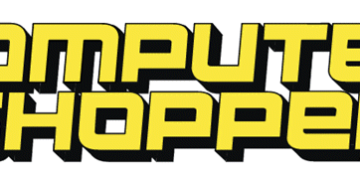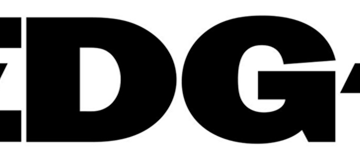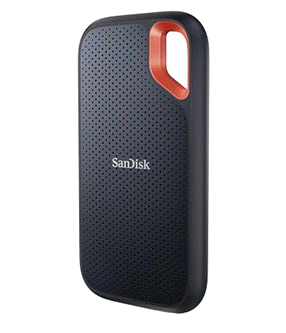2025-08-18 08:42:00
www.getlago.com
When we started Lago, we picked Ruby on Rails for our core API. The choice was obvious because our founding team had decade of Rails experience. Rails was the fastest way we could build an API product.
Today, we’ve receive millions of API calls a day. We’ve upgraded through multiple Ruby/Rails versions. Maybe that sounds silly in a world where young, Python/Go/JS-wielding entitlements have never even heard of Ruby.
We do admit that we’ve added Go and Rust where it makes sense.
But if we were starting today, in 2025, we’d still choose Rails.
The boring superpower: shipping speed
Nowadays, the companies championing Ruby are no longer fast-growing startups run by CEOs in their 20s. They’re mature enterprises run by middle-aged dads:

Shopify, Basecamp, GitHub, GitLab… they’re not exactly trendy AI startups. You could deduce that Rails is outdated, but another view on that fact is that it has great longevity.
When we started, we frankly chose Rails for a practical reason: We had the most experience with it. And I think that’s an important lesson: Don’t choose your tech stack based on your YC batch mates or whatever the trendiest startup uses. Choose it based on how *you* can deliver the best product.
So that’s what we did. We started Lago with Rails’ API-only mode, which trims the middleware stack, skips view rendering, and keeps the good stuff: migrations, validations, Active Record, background jobs. That meant less time gluing things together and more time shipping product.
But what about scaling?
One of the biggest criticisms of Rails is that it doesn’t scale. Especially in an age where companies only take months to grow to dozens of millions in ARR, scaling is important. But scale is an architecture and operations problem, not a framework limit.
Even at our scale—processing millions of events and API requests—we’re nowhere near the limits (and that’s true for Shopify, GitHub, GitLab etc. too). There are a few reasons for this:
– Rails 8 made operations simpler. We can go from code to production containers without a PaaS tax.
– Redis + Sidekiq is battle-tested and highly scalable
– We’re starting to implement Ruby Fibers to add asynchronous concurrency
– Rails with Puma, autoscaling, and sane caching make the framework extremely scalable.
Velocity still matters most than almost anything when you’re building a product company. Rails gives us that without demanding microservice sprawl.
But that doesn’t mean Rails is perfect. There are tradeoffs.
The Rails imperfections we live with
Some things require discipline on Ruby:
– Performance & memory: Do the wrong things and you’ll pay for it.
– Concurrency: CRuby’s Global VM Lock means only one thread runs Ruby code at a time. This is where we sometimes offload to Go/Rust.
– Magic: Rails can be too fancy. That’s why we favor explicit, boring code and avoid gem dependencies.
Every programming language has its downsides. Knowing them takes experience. We love Rails because we know it so well that we understand the downsides, how to avoid them—and when to offload tasks.
We don’t force Rails to be everything. It’s just not great at some things. We’re willing to accept that.
– Rails handles our API, domain logic, and billing workflows.
– Go powers services that need high I/O concurrency or long-lived network connections.
– Rust handles CPU-bound jobs.
This approach keeps our core productive and lets us optimize the hot paths without attempting a painful rewrite.
Hiring isn’t a blocker
As a startup, we always need great talent. And young graduates don’t exactly leave school excited about Rails. So far, we’ve not had a problem with the talent pool.
That’s mainly because we’re not hiring hundreds of engineers and are extremely selective with new hires. There’s still a big amount of Ruby engineers, many of whom can run production at scale. So far, we haven’t run out of people to hire.
Would we choose Rails again in 2025?
Yes. A programming language isn’t a religion you follow. It’s a tool you use to help you ship a great product quickly. And that’s what it allows our team to do.
Keep your files stored safely and securely with the SanDisk 2TB Extreme Portable SSD. With over 69,505 ratings and an impressive 4.6 out of 5 stars, this product has been purchased over 8K+ times in the past month. At only $129.99, this Amazon’s Choice product is a must-have for secure file storage.
Help keep private content private with the included password protection featuring 256-bit AES hardware encryption. Order now for just $129.99 on Amazon!
Help Power Techcratic’s Future – Scan To Support
If Techcratic’s content and insights have helped you, consider giving back by supporting the platform with crypto. Every contribution makes a difference, whether it’s for high-quality content, server maintenance, or future updates. Techcratic is constantly evolving, and your support helps drive that progress.
As a solo operator who wears all the hats, creating content, managing the tech, and running the site, your support allows me to stay focused on delivering valuable resources. Your support keeps everything running smoothly and enables me to continue creating the content you love. I’m deeply grateful for your support, it truly means the world to me! Thank you!
|
BITCOIN
bc1qlszw7elx2qahjwvaryh0tkgg8y68enw30gpvge Scan the QR code with your crypto wallet app |
|
DOGECOIN
D64GwvvYQxFXYyan3oQCrmWfidf6T3JpBA Scan the QR code with your crypto wallet app |
|
ETHEREUM
0xe9BC980DF3d985730dA827996B43E4A62CCBAA7a Scan the QR code with your crypto wallet app |
Please read the Privacy and Security Disclaimer on how Techcratic handles your support.
Disclaimer: As an Amazon Associate, Techcratic may earn from qualifying purchases.





















































![[Download] Intuitive 3D Modeling | Abstract Sculpture | FLIGHT | DANA KRYSTLE](https://techcratic.com/wp-content/uploads/2025/08/1755630966_maxresdefault-360x180.jpg)


















![for Tesla Model 3 2025 Dashboard Cover,[Anti-Glare and Dustproof] Suede Dashboard Pad…](https://techcratic.com/wp-content/uploads/2025/08/61yHoBc6VfL._AC_SL1500_-360x180.jpg)































